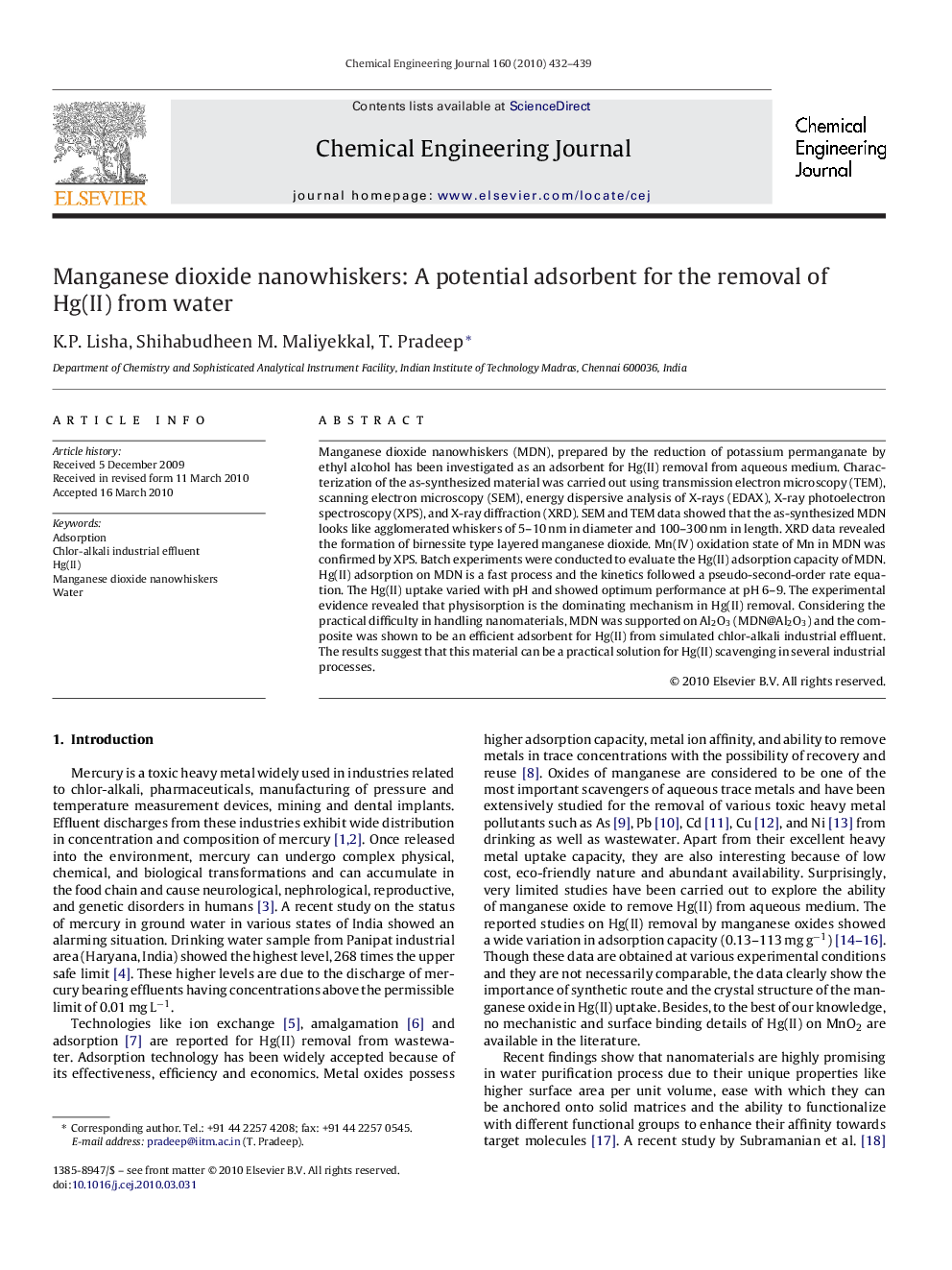| Article ID | Journal | Published Year | Pages | File Type |
|---|---|---|---|---|
| 151511 | Chemical Engineering Journal | 2010 | 8 Pages |
Manganese dioxide nanowhiskers (MDN), prepared by the reduction of potassium permanganate by ethyl alcohol has been investigated as an adsorbent for Hg(II) removal from aqueous medium. Characterization of the as-synthesized material was carried out using transmission electron microscopy (TEM), scanning electron microscopy (SEM), energy dispersive analysis of X-rays (EDAX), X-ray photoelectron spectroscopy (XPS), and X-ray diffraction (XRD). SEM and TEM data showed that the as-synthesized MDN looks like agglomerated whiskers of 5–10 nm in diameter and 100–300 nm in length. XRD data revealed the formation of birnessite type layered manganese dioxide. Mn(IV) oxidation state of Mn in MDN was confirmed by XPS. Batch experiments were conducted to evaluate the Hg(II) adsorption capacity of MDN. Hg(II) adsorption on MDN is a fast process and the kinetics followed a pseudo-second-order rate equation. The Hg(II) uptake varied with pH and showed optimum performance at pH 6–9. The experimental evidence revealed that physisorption is the dominating mechanism in Hg(II) removal. Considering the practical difficulty in handling nanomaterials, MDN was supported on Al2O3 (MDN@Al2O3) and the composite was shown to be an efficient adsorbent for Hg(II) from simulated chlor-alkali industrial effluent. The results suggest that this material can be a practical solution for Hg(II) scavenging in several industrial processes.
